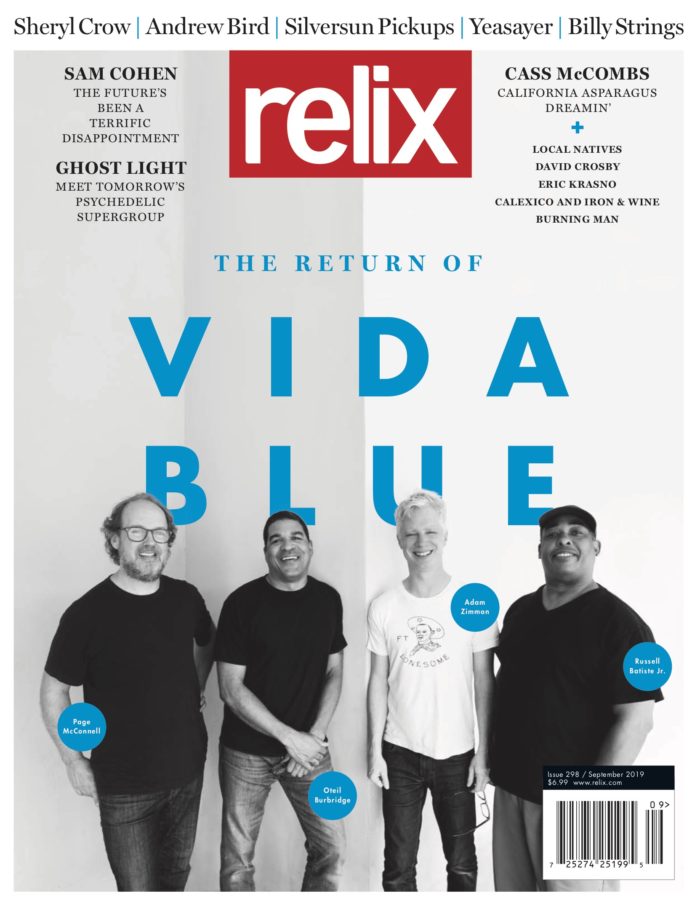Vida Blue: Analog Delay
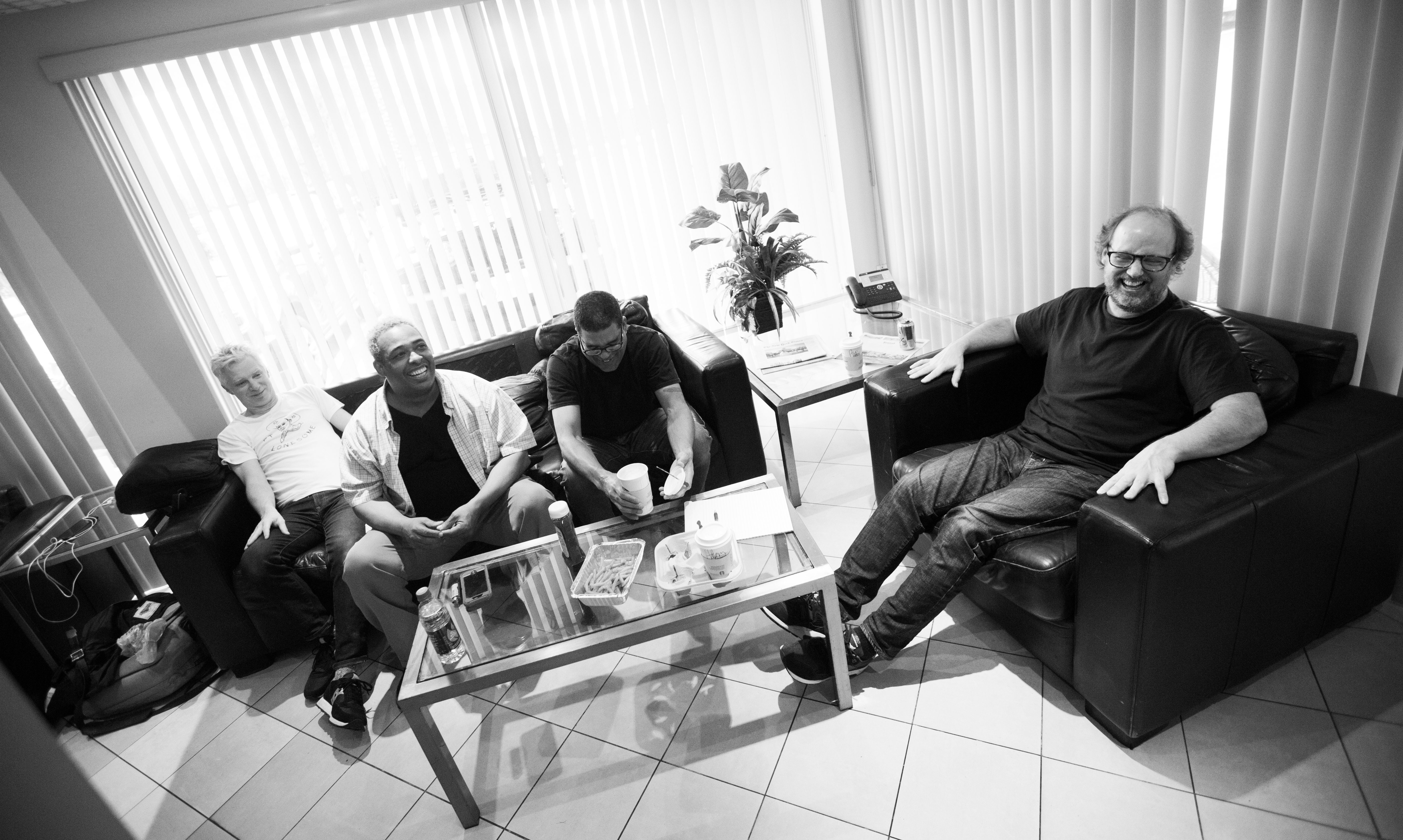
Vida Blue today: Adam Zimmon, Russell Batiste Jr., Oteil Burbridge, Page McConnell (l-r) (photo by René Huemer)
This article originally appears as the cover story in the September 2019 issue of Relix. Use code VIDABLUE here before Sept. 21 and get $5 off all subscriptions!
After a 15-year hiatus, Page McConnell returns to the studio and the stage with his Vida Blue project, alongside Oteil Burbridge, Russell Batiste Jr. and Adam Zimmon.
“Even though it had been nearly 15 years, I never really thought it was over,” Page McConnell says of his recent decision to reconvene the electro-funk project Vida Blue, which hadn’t performed since the third Bonnaroo Music & Arts Festival in 2004. “I do a lot of work in my studio, not for anything in particular, just because I like doing it. Then, at one point, I realized that I had a handful of songs that the band would be a great vehicle for—or, perhaps, the songs would be a great vehicle for the band. So I reached out to Oteil and Russell to see if they wanted to do it.”
McConnell initially assembled Vida Blue in 2001 after attending two nights of live music in Manhattan—first seeing drummer Russell Batiste Jr. with the funky Meters at Irving Plaza, then watching bassist Oteil Burbridge with the Allman Brothers Band at the Beacon Theatre. McConnell envisioned the adroit tandem as the ideal rhythm section to support his exploration of synthesizer sounds. He had never quite pursued this interest with Phish—who were then in the midst of a 26-month hiatus that began in October 2000—opting instead to focus on piano and organ.
Invigorated by a collective creative alchemy, Vida Blue released two studio albums and embarked on a few national tours in relatively short order before that final Bonnaroo gig.
Although the three musicians crossed paths on occasion over the intervening years, in the late fall of 2017, McConnell felt that the time might finally be right to revisit the project. As befits someone who wrote “Most Events Aren’t Planned,” the opening track on Vida Blue’s debut album, McConnell is understated and matter-of-fact while describing these developments. Batiste, by contrast, is anything but restrained.
“Oh, man, I practically fainted!” he exuberantly recalls. “I live for the moment of kicking, playing live. And I had missed trying to make people happy with that Vida Blue groove. There’s no other band I’ve played in that has that sound. So when I heard from Page, it took all the wind out of me for a second.”
Burbridge’s reaction landed somewhere between his once-and-future bandmates: “When Page told me what he had in mind, I wasn’t that surprised at first. I thought, ‘Oh, cool, sweet.’ It wasn’t until we got together and he said, ‘You know, it’s been almost 15 years,’ that I was like, ‘What? No, say it isn’t so!’ I couldn’t believe that much time had passed. Of course, as soon as we started playing, all those years fell away.”
By the time Vida Blue arrived at Criteria Studios in Miami, they had expanded to a quartet with the addition of guitarist Adam Zimmon.
“I made the decision, at least 10 years ago, that if I ever got Vida Blue back together, I wanted Adam to be part of it,” McConnell says. “Adam’s a wonderful person, an incredible player, very tasteful and one of the nicest guys in the business. We’ve always gotten along.”
Zimmon first met McConnell after Vida Blue recorded their 2003 sophomore album, The Illustrated Band, with the Spam Allstars, a Miami-based outfit that blends electronica, hip-hop and Afro-Cuban beats. Zimmon had missed those sessions because he was touring in Shakira’s band but, by the time Vida Blue hit the road for a series of gigs with the Spam Allstars in January 2004, the guitarist was back in the fold.
“I imagine the idea that I was working with Shakira and then with Page might make some heads explode because it doesn’t seem to make sense,” Zimmon observes with a laugh. “But, to me, that Shakira gig was a really good one because I got to see the world. The Spam Allstars always operated as a collective, so whether or not I was there, they could still work. And, when I came off the road, I could show up the next day and play. When Page first encountered the Spam Allstars, they didn’t have a guitar player with them. I owe gratitude to Andrew [Yeomanson, who performs as DJ Le Spam], the guys and our manager, who said, ‘We have this other guy who’s one of the main members of the band.’ I don’t think Page intended to have a guitar player. It was really a stroke of luck and then, we just hit it off.”
In the days leading up the January 2018 recording sessions, McConnell extended eight additional invitations to evoke the total spirit of the Vida Blue experience.
“That initial connection with the Spam Allstars was really special,” he affirms. “It certainly blossomed into something. Since we were recording in Miami, I thought of at least two songs that could really benefit from them. Criteria Studios has some giant spaces where all of us could set up comfortably and track together in one big room. Everyone had a blast.”
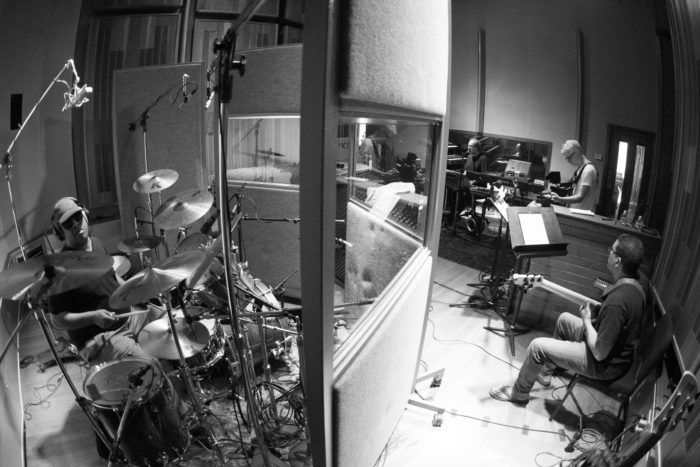
When McConnell reflects on the four days at Criteria that supplied the foundation for the third Vida Blue album, which will be released in September 2019 as Crossing Lines, the word he returns to is joy. “It was certainly fun the first time around,” he notes. “But the thing that sticks out to me about this recording session is there was so much laughter, so much positivity and so much joy.”
Burbridge affirms, “Page is such a sweet person. Me and him and Russell had such good times, and that has not changed one bit. The amount of laughing that we do together is just stupendous. As soon as we got back together, a lot of the old inside jokes were coming out. There was lots and lots of laughter, which is the best thing for a person. In a lot of ways, that hasn’t changed at all.”
However, the bass player also makes a point to contrast his current headspace with his frame of my mind during the group’s initial go-round.
“I’m in the best spot I’ve been in my entire adult life, almost 180 degrees from then,” Burbridge acknowledges. “At that point, I was starting to get out of a low point. The negativity knew it was on its way out, and it was putting up a fight—a last-ditch effort. We were slugging it out but the negativity was destined to go down. Now, I’ve been in a sweet spot for a while, and I think you can feel that on the record.”
Batiste echoes this sentiment.
“It was a rough few years there, a rough few years,” he concedes. “But, right now, I’m really happy with my life and I hope it continues to get better. I’m in my zone where Jah put me on this earth, where I’m supposed to be: playing that funk, making people happy and making myself happy.”
However, even as Burbridge relates his prior struggles, he is quick to point out that Vida Blue’s sound never suffered during those early days.
“We always made good music, no matter what,” he says. “You use whatever’s in your life—light or dark—as fuel when you’re playing. Plus, as much as I was really going through the negative stuff back then, we had a lot of laughter. And when you’re feeling that good about the people that you’re playing with, you can’t help but have some really amazing moments come out, musically.”
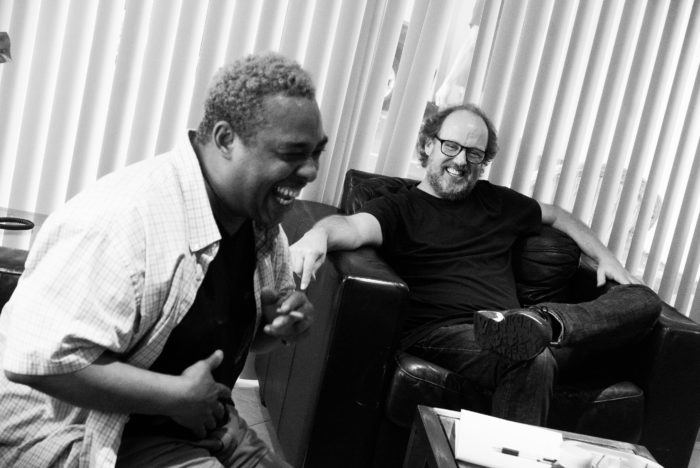
Batiste adds, “We connected right away. We still touch one another when we play and there’s no other place to get that Vida Blue flavor. I’ve never heard anyone say this band sounds like this, and then start naming other bands. They can’t think of anybody else we sound like; we only sound like us.”
Vida Blue’s unique sonic amalgam is a product of the individual members’ creativity, commitment and command. Burbridge came up through the School of Hampton, playing with the late Col. Bruce in The Aquarium Rescue Unit for many years, before joining the Allman Brothers Band and, more recently, gaining new levels of acclaim for his role in Dead & Company.
McConnell recalls, “I first met Oteil on one of my favorite nights of going to see music. We were just starting to tour down South with Phish. We’d never really played much down there and we were doing gigs with Widespread Panic—they would come up North and open a few shows, and we would go down there and open a few shows. We were in their hometown of Athens, Ga., and The Aquarium Rescue Unit was playing right down the street in a little bar. It was a night off so we got to see Oteil, Jeff Sipe and Bruce. It might have been the first night that Jimmy Herring played with The Aquarium Rescue Unit—there was another guy, Charlie [Williams], who was playing guitar, too. Matt Mundy wasn’t in the band yet. There were only a few of us in the club, and I was standing in front of them watching them play, saying to myself: ‘I can’t believe I’m seeing this band.’”
Batiste is another true force of nature—Zimmon describes him as a tornado—who immersed himself in music at a very early age. His father, David Russell Batiste Sr., was a celebrated New Orleans keyboardist, who joined The Meters after Art Neville left to focus on The Neville Brothers. New Orleans journalist Keith Spera has written how “the young Russell would fall asleep on the sofa watching Meters drummer Zigaboo Modeliste practice in the family living room.”
In 1998, McConnell shared some studio time with Batiste, Art Neville, George Porter Jr., Bill Summers and Mike Gordon to record a song for the Get You a Healin’ album, which benefited the New Orleans Musicians’ Clinic, founded by Page’s father, Dr. Jack McConnell.
Burbridge—a former drummer himself, who has played with the likes of Sipe, Dennis Chambers, Mickey Hart, Bill Kreutzmann, Butch Trucks and Jaimoe over the years—raves, “Russell should be on the cover of every drum magazine. That cat is such a freak. He’ll mess with me, too. If I’m seeing him somewhere in New Orleans and he spots me in the audience, he’ll play something blistering and then give me this look while I’ve just been decapitated. It’s ridiculous.”
Batiste chuckles at Burbridge’s observation and confirms, “I saw him walking through the club while I was onstage one night. At that moment, I said to myself: ‘I’m gonna start chopping. I’m going to go off.’ I don’t like to take drum solos these days because I like to keep it in the pocket as much as I can. So while the band was playing, I did a couple of licks on the drum that were out of the ordinary and got his attention real quickly. Then, I looked at him and nodded my head to let him know, ‘I’m still out here kicking, waiting for you. Come on and get some of this…’”
“He’s also an amazing piano player and composer; he can read and write music in all the different clefs,” Burbridge adds. “I walked in on one of his studio sessions, and he was playing and talking to the band at the same time that they were playing. He was like, ‘Hold up there! E-flat! E-flat!’ One of the horn players was playing an E natural instead of an E-flat, and he caught it like a conductor while he was playing drums in the session.”
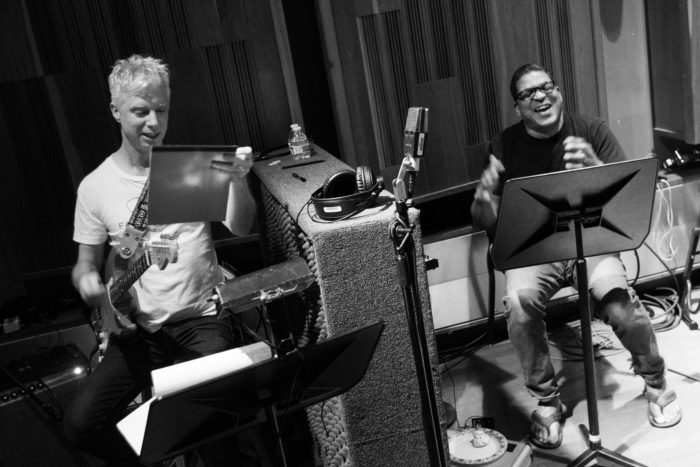
Zimmon’s relationship with McConnell flourished soon after they met and eventually extended beyond Vida Blue. When McConnell began the recording sessions for his 2007 eponymous solo album, the guitarist recalls, “I soon found myself in a Brooklyn studio with Mike Gordon, Jim Keltner and Page, which was surprising and wonderful.” Zimmon also ended up as part of the group that toured in support of that record and later contributed to McConnell’s 2013 all-instrumental release, Unsung Cities and Movies Never Made. (He is currently a member of Ziggy Marley’s touring band and has put in stints with Colbie Caillat, Glen Campbell and Enrique Iglesias.)
Zimmon is particularly adept at lending texture and nuance, although McConnell points to his solo on “Maybe” from Crossing Lines and declares, “I really love Adam’s playing on that. When we got into the studio, I didn’t know it was going to turn into the jam it did. He killed it there at the end when he opened up and took over for a few minutes. That’s one of my favorite tracks on the album.” It’s also noteworthy that Zimmon has joined McConnell on more recordings and stages than any other guitarist not named Trey Anastasio.
Batiste offers his own testimonial for Vida Blue’s bandleader: “He’s one of a kind. He’s a keyboard player to be reckoned with and, when he cuts loose, I don’t think of anybody else. That’s the whole purpose of expressing yourself musically: to be one of a kind, to leave something that everybody is going to remember when you leave this earth, so that they know what you’re about and they feel you. I believe, with this record, he has accomplished that because this album is different from the first one—he wasn’t just coming out to jam and see how things were going to turn out. He had more on his mind.”
McConnell returned home to Vermont energized by the sessions but a bit daunted by the task at hand. The band had reconnected just as he had hoped, despite the long, fallow period. However, he now had 15 songs to shape and sequence for the record.
The process had been somewhat different from the group’s initial experience at Piety Street Recording in New Orleans. Batiste recalls, “On the first record, it was like a meet-and-greet session because I didn’t really know either one of them. Page walked in, plugged in his keyboard, played some sort of pattern and then I started to groove.”
McConnell contrasts this with the group’s latest effort: “We did a fair bit of recording and playing together from the end of 2001 to 2004, and those guys really developed a rapport musically and got inside each other’s heads. So even though we hadn’t been together for a long period of a time, they’re both so talented, such great technicians and so musical that they can do things that other rhythm sections aren’t capable of. They really had developed a style and, once we got into the studio, it all came right back.”
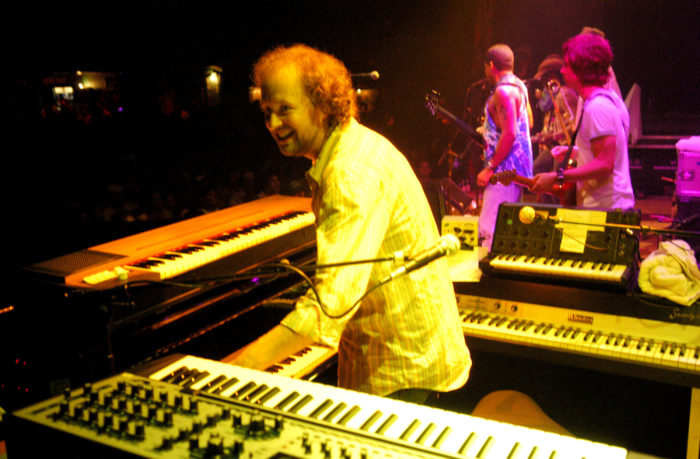
McConnell’s songwriting had progressed significantly over that stretch as well. The majority of the selections on Vida Blue are credited to both McConnell and Burbridge. By contrast, seven of the eight tunes on Crossing Lines are McConnell solo compositions, with Batiste contributing the final offering.
“I really didn’t start much songwriting until I was in my 40s,” McConnell explains. “When we did A Picture of Nectar, I was studying jazz—or that had been more of a focus for me—so ‘Magilla’ is a jazz-standard, rhythm-changes tune. That was in the early ‘90s and I didn’t really write much after that, until the first Vida Blue album.”
McConnell dispersed Vida Blue in mid-2004. He now says that he felt like a chapter had come to an end following the second record and tour with the Spam Allstars. So he opted to put the project on hold, also motivated by the opportunity to spend more time at home with his young daughter. However, he continued to build on his songwriting experiences with the group, both through his two subsequent solo records and his increased productivity with Phish.
“Writing lyrics was new to me. It’s not something I’ve been doing my whole life. It started with Vida Blue. Then, the first song with lyrics that I wrote and Phish recorded was ‘Army of One’ [which debuted in 2003]. So that’s a newer thing for me and, with each attempt, I’m having a little more success, so I’m enjoying it.”
While some of the songs on Crossing Lines were drawn from his steady accumulation of material, he composed “Analog Delay,” the pulsing opening track, specifically for Vida Blue in the month prior to the studio sessions. McConnell’s goal was to produce additional synth-driven material for the record.
The playful “Checking Out” then follows, which he reveals was by design. “I probably front-loaded the album with stuff that felt upbeat. It was partly because I liked some of the tracks on the first Vida Blue album that felt that way, and partly because I liked the Latin influence and percussive fun stuff that the Spam Allstars brought to the second album. I also wanted to have an electronic feel and a synthesizer feel, so I start the album that way.”
“Checking Out” came together through what McConnell jokingly refers to as a “backward process” that also yielded “Where Did It Go.” Both of these songs left Criteria Studios as instrumental tracks. However, six months later, McConnell decided that he wanted more songs with lyrics, so he spent some time with each of the tunes, fashioning words to complement the music.
On the other hand, “If I Told You” was already a completed song that McConnell wrote for his wife during Phish’s second break between 2004 and 2009. The band tracked it for 2009’s Joy but never completed the process because McConnell “didn’t feel it was quite how I imagined it. I really liked the demo, though, which is what ended up on the Party Time album we put out. Then, after I decided to put Vida Blue back together and realized we would be recording in Miami, it was one of the songs that I felt could benefit from the Spam Allstars.”
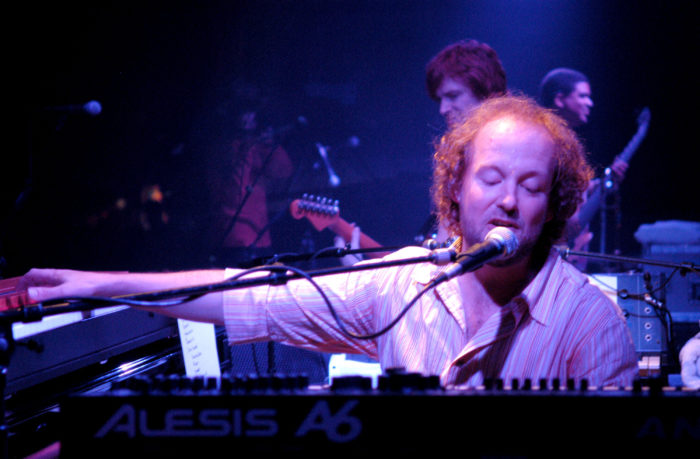
McConnell named Crossing Lines after the album’s fourth track, “Phaidon.” The song evokes a mood closer to McConnell’s stately composition “Halfway to the Moon,” which appears on Phish’s Fuego. It might not feel like a Vida Blue tune circa 2002, but this graceful offering is well supported by McConnell’s masterful bandmates. The pacing and dynamics of the record along with its sequencing lend a richness to the listening experience.
As Batiste observes, “One song doesn’t sound like the next one; they’re different flavors. But the one thing they all have in common is that Vida Blue groove.”
That groove resounds clearly on the drummer’s own composition, “Real Underground Soul Sound.” “The song is a tribute to Art Neville and my dad, the two keyboard players I admire the most in my life,” he discloses. “Nobody had that flavor like them. It’s written to honor them and, since it was a keyboard song, I asked Page to check it out. It turned out he loved the groove, and I love Page for giving me my props and allowing me to do this.”
Zimmon recalls that, while recording the tune, “Russell was teaching it to us in real-time. That’s why you can hear him shouting throughout the whole thing because he’s throwing stuff at us—he’s saying, ‘Put that F-sharp on top, play that C chord like this.’ He’s arranging the thing almost like Duke Ellington. He has the most sophisticated musical mind, harmonically—he’ll come up with this incredibly dense, sophisticated stuff and he’s doing it with a spirit that’s street.”
It’s a fitting track for an album that is, by turns, both playful and palatial. Crossing Lines stands on its own as a recorded statement but leaves plenty of room for Vida Blue to extend the conversation when the band takes the material on the road for three dates in late September.
While those nights will offer their fair share of improvised moments, one can also reasonably predict that Batiste will become emotional along the way. On Dec. 31, 2001 at Roseland Ballroom, during Vida Blue’s second-ever gig, the band performed the drummer’s original, “Russell’s Tune.” He recalls, “It was the first time I played a song of mine in front of so many people. It was a beautiful moment and one that I’m taking with me to my grave. I’m surprised I made it through the night after that because I was just so overwhelmed. I had tears in my eyes the whole song; I couldn’t hold them back.”
He suggests that this may well reoccur when the band debuts “Real Underground Soul Sound.” If this happens, he notes, “I have a device for that called a fog machine. Hopefully, I’ll have so much fog around me that no one will be able to tell if I’m weeping.”
As for any conjecture regarding the future of Vida Blue, McConnell divulges, “I wanted it to start small. I didn’t want to overwhelm myself with too many dates or too many sets, and just get it back up and running. I would like this to continue over the years and not be a one-and-done or three-and-done kind of thing. It’s such a fun band, with such great players. It’s a true honor for me to play with them.”
This article originally appears as the cover story in the September 2019 issue of Relix. For more features, interviews, album reviews and more, subscribe here.
